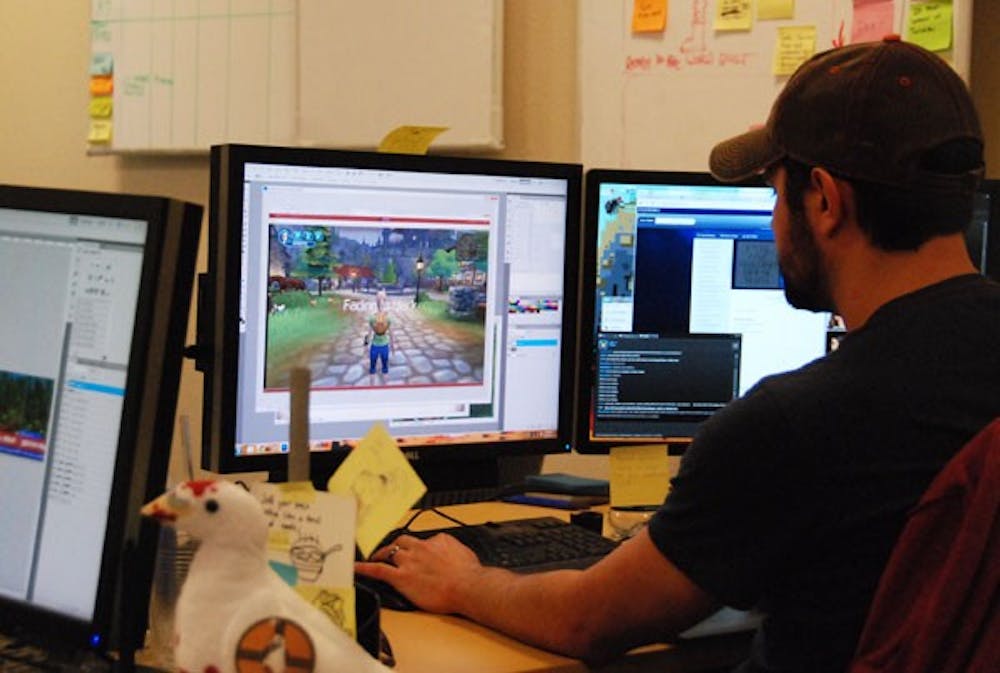 Jesse West of ASU's Learning Sciences Institute does a walk-through on one of the educational video games he works on. (Photo by W. Scot Grey)
Jesse West of ASU's Learning Sciences Institute does a walk-through on one of the educational video games he works on. (Photo by W. Scot Grey)The Center for Games and Impact develops games targeted at elementary and middle school students. The games combine elements of education and entertainment.
The center launched as part of the Mary Lou Fulton Teachers College in October.
Center for Games and Impact Director Sasha Barab said the games could positively impact children.
“We wanted to set up a space where we have real industry partners … coupled with experts (and) coupled with designers,” he said.
A game that will have a real impact on children needs to be based on more than just a good idea, Barab said.
“Execution is everything,” he said.
The Quest Atlantis, a game that Barab and his team developed while working at Indiana University, is being revamped and modernized at the center. It is now known as Atlantis Remixed.
The center partnered with game-based learning product publisher E-Line Media to launch the games.
The Doctor’s Cure, one of the games from Atlantis Remixed, is being tested in Tucson middle schools. The game is designed to improve persuasive writing skills.
Graeme Bayless, a consultant for the center, said a change in the education system is necessary.
“We’re dealing with a world where kids are surrounded by media and technology,” he said. “It’s difficult for traditional schooling to compete with YouTube.”
Bayless, who works for E-Line media, has been a part of the video game industry for more than 25 years.
He said his experience building high-profile games will benefit the center.
“I’ve worked with studios like EA and Crystal Dynamics,” he said. “But this is a fantastic opportunity.”
These games will engage children as much as mainstream titles do, Bayless said.
“This really is a legitimate way to take something based on entertainment and build it as an educational tool,” he said.
Game designer Brenden Sewell, who has worked with Barab for a few years, said the center has encountered unique challenges.
“We have to communicate with teachers and try to be a bridge between academic environment and entertainment,” he said.
ASU is the only university where such a center could be established, Sewell said.
“The ideals of the New American University make it possible to combine entertainment and education,” he said.
Designer Scott Foust said he has always been interested in combining entertainment and learning.
After working with studios like Sega, Foust heard about Barab and contacted him.
Being such a small group is beneficial, Foust said.
“We are a well connected group of people,” he said. “In a larger studio, it would be hard to even find the person you need.”
The games the center produces have a real effect on the children that play them, Foust said.
“It feels really great to create a piece of software that will have an impact on a person’s future beyond entertainment,” he said.
Jeff Seamen, a 3-D artist, said he enjoys working at the center.
“There’s so few of us,” he said. “It’s really nice to be such a small team and know everybody.”
Seamen said he prefers developing educational games.
“I like games that are out in consoles already,” he said. “But this feels like it’s actually achieving something.”
Reach the reporter at dpbaltaz@asu.edu




